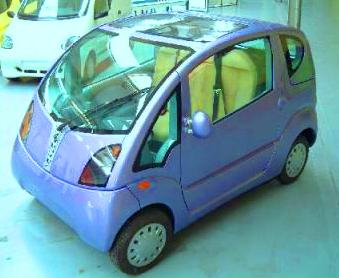Sustainability At Work And Home In America

Waste Leads To Higher Prices
It is true that we may have too much waste in America and perhaps other parts of the world as well. I first heard about waste throughout America in elementary school when we were studying history.
My teacher had, after WWII, witnessed the waste of coffee and fresh milk that was all dumped into the Gulf of Mexico in order to drive up the farmers' and distributors' prices of coffee and milk and further, to increase the retail price at grocery stores and restaurants.As first graders, we were shocked, but this teacher gave us many good lessons of this sort to remember.
We learned that after the war and the beginning of giant waste, the price of an 8-ounce cup of coffee went from 5 cents a cup to 15 cents a cup - 300%! That was a lot of money in those days.
Restaurants began in the late 1950s and early 1960s to charge money for some things that were previously free, like a slice of onion or a slice of tomato on a hamburger (suddenly 10 to 15 cents each). Some folks became pretty angry and stopped going to restaurants.

Because of planned waste after World War II, the price of an 8-ounce cup of coffee went up by 300%

Waste Of Electricity
Another resource that is sometimes wastes is electricity and the natural resources that produce it. On November 9, 1965 a huge blackout took root in the state of New York. Within just a few minutes, it spread all over the US East Coast and northward to some parts of Canada. It adversely affected 30,000,000 people across a total of 80,000 square kilometers.
For several hours, everything was dark and nothing worked and people panicked. This revealed to us the extent to which we are too dependent on electricity.
Even if your local blackouts do not become quite as bad as the Blackout of 1965, you can take effective steps to keep your life going.
One of these is adding solar panels to the roof of your house. A gentleman in Orient, Ohio back in the 1950s began building his family home with conservation in mind and environmentally friendly ideas. Some people thought he was crazy, but his natural gas and electric bills were practically nil.
At the same time, a family at the other end of the county built an underground home in the side of a short hill and placed additional soil on top and landscaped it. The entrance and foyer were above ground and skylights were used where possible. Solar panels were also used. Their natural gas bill was lower than anywhere else in the neighborhood. Ventilation was great, with fresh air any time of year
Today's solar panels are small, powerful, and inexpensive compared to the 1950s and 1960s. The new solar cells are thin and barely visible today. Some are even flexible and bend to fit any style of roof, and you can even solar shingles! It is truly amazing. You can get solar energy systems in many sizes to provide direct assistance during the day and then store electricity in batteries for overnight.
In Dayton, Ohio several businesses built underground buildings in the sides of hills in the 1960s and 1970s, saving costs and energy at once.

Prevent Waste - Recycle What You Can
Recycling, water conservation, and alterantive cars are some of my favorite ways of conserving energy. A few ideas are listed here.
Wood is very similar to the material used in these Adirondack chairs, but it is not wood
These Adirondack chairs look just like wood but are made of plastic and made available by Green Culture online. They look like classic wooden deck chairs, but are "Poly-Wood" -- recycled plastics processed. Other companies make park benches from this plastic.
The super- sturdy plastic-based material can survive even in the woods and stand up to all weather conditions, including UV radiation -- almost indestructible.

Sustainability Ideas for The Near Future
Use Milk Cartons Wisely
We do not always need to purchase expensive plant fertilizer for our house plants. Instead of commercial fertilizer, use your next empty milk carton.
When you finish the milk, fill the carton with water and use that for watering houseplants. They will flourish and you wills save money and resources.
Bacteria that grow in milk that is no longer very fresh are excellent for houseplants and cactus, also garden herbs, potatoes and tomatoes. The milk carton and water method can also reduce the number of plant pests.
Compressed air may be as good as wind turbine power.
A Car That Runs on Air

The Air Car
This Air Car has an engine that runs on air! Pistons compress ambient air to refill air storage tanks and make expansions that reheat the air to push the pistons. It has an injection function similar to gas engines, but is more efficient. The air engine is powered by compressed air from a carbon-fiber tank with 90 cubic meters of air at 4500 psi. The fiberglass body Air Car was invented in France and will be manufactured in India.
100 MPG from this Car!

Microcars
A great handyman form Maine, Mr. Jory Squibb, invented this three-wheeled eco-friendly microcar by combining two Honda Elite motor scooters.
The Moonbeam is small, but two people can fit and it gets over 100 miles per gallon on the highway and 85 miles per gallon in town. Moonbeam's cruising speed is 35 - 40, but can reach 52mph. out.
This microcar has a 150cc Honda 4-stroke scooter motor for power and water-cooling from the motor to heat the riding compartment in winter. Total project time was 1000 hours and $2000.
© 2007 Patty Inglish MS








